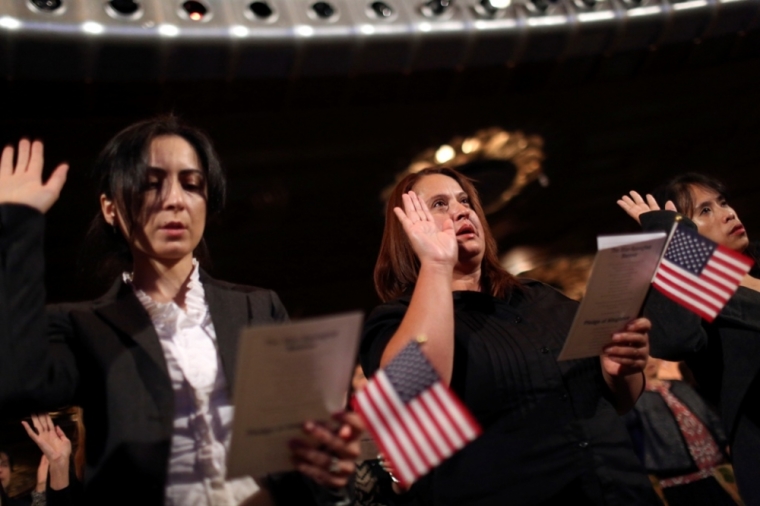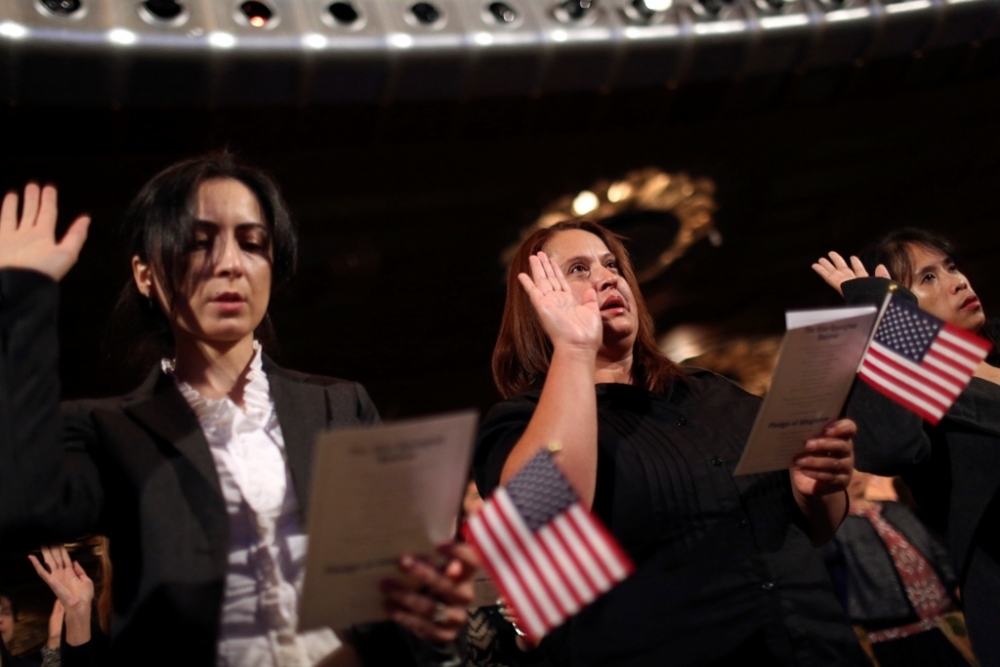
A congressional report suggests that net immigration will likely account for all of US population growth over the next two decades, even if fertility rates are expected to rise slightly.
The Congressional Budget Office, which conducts nonpartisan analysis of bills proposed by the US Congress, released “The Demographic Outlook: 2022 to 2052” last month.
The report includes population projections for the next 30 years. The CBO argues that “the size of the U.S. population and its age and gender composition affect federal spending, revenue, deficits, debts, and the economy.”
Over the next three decades, the report predicts that the U.S. population will grow from 335 million today to 369 million in 2052. The CBO predicts that by 2043, U.S. population growth will be driven entirely by net immigration, as the number of deaths in the country will exceed the number of births beginning at that time.
The total fertility rate – the average number of children per woman – is expected to increase over the next three decades, but will remain below replacement level, defined in the report as “the fertility rate necessary for a population to replaces exactly in the absence of emigration.”
After a projected decline to 1.60 births per woman in 2021, the CBO estimates that the total fertility rate will drop to 1.75 births per woman in 2031 and remain stable over the next two decades. This figure does not reach the replacement rate of 2.1 births per woman.
Over the next three decades, women under 30 are expected to see their fertility rates decline, while women 30 and older will see their fertility rates increase. The CBO attributes this to “trends in delayed childbearing and the rising average age of mothers.”
“[T]The size of the working-age population affects the number of people employed; likewise, the size of the population aged 65 or older affects the number of recipients of Social Security and other federal programs,” the report said.
The size of the working-age population, especially that of those aged 25 to 54, is expected to grow at a slower rate than the population aged 65 and over.
The senior population is expected to grow at a rate of 1.2% per year over the next 30 years, while the population aged 25 to 54 will grow at a much slower rate of 0.2%. Meanwhile, the ratio of people aged 25 to 54 to seniors is expected to increase from 2.3 to 1 in 2022 to 1.7 to 1 in 2052.
These statistics could impact the ability of the United States to maintain its social safety net for older Americans, Medicare and Social Security, as the number of people working to fund these benefits dwindles in the face of increased demand. of programs caused by an increasing number of seniors seeking benefits.
Falling death rates and longer life expectancies are complicating concerns about the social safety net for older people. After a brief increase in the death rate due to the coronavirus pandemic, the death rate is expected to decline steadily over the next three decades. At the same time, the CBO predicts that life expectancy will increase from 77.1 years in 2022 to 82.3 years in 2052.
The report projects that net immigration – the number of immigrants leaving the United States in a given year subtracted from the number of immigrants arriving in the country that year – will fall from about 950,000 to over the next decade to about 1.1 million over the past decade. of the projection period.
Over the next decade, an average of 800,000 lawful permanent residents will settle in the United States, along with approximately 80,000 “foreign-born persons without legal status” and another 80,000 lawful temporary residents.
Lawful permanent residents are “allowed to work, subject to income tax, and eligible for most federal programs.” On the other hand, “foreign-born persons without legal status” are “generally ineligible for federal programs” and lawful temporary residents have limited eligibility for these programs.
Over the last decade of the projection period, the number of lawful permanent residents moving to the United States each year is likely to reach 870,000, while the number of “foreign-born persons without legal status” arriving in United States every year will nearly double to 150,000. The number of legal temporary residents coming to the United States will remain stable at 80,000 if current projections hold.
Ryan Foley is a reporter for The Christian Post. He can be contacted at: ryan.foley@christianpost.com
Free Religious Freedom Updates
Join thousands of others to get the FREEDOM POST free newsletter, sent twice a week by The Christian Post.

